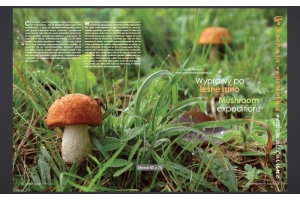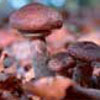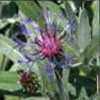Aktualności
NUMER 13: "Wyprawy po leśne runo" - Leszek Horwath (ENGLISH)
"Czy kuchnia i życie bez grzybów byłyby równie smaczne? Z pewnością - nie. W góralskich potrawach, dość monotonnych, o czym już niejednokrotnie pisałem, obecność grzybów stanowiła istotne, smakowe i aromatyczne urozmaicenie" - Leszek Horwath

Zamów nowy numer magazynu -------------------------->
Buy the new issue of magazine--------------------------->
"Wyprawy po leśne runo" - Leszek Horwath
Gdy tylko las swym oddechem dawał znak, że pora na zbiór, wyruszali doń góralscy... „Argonauci”. Na ogół były to starsze, doświadczone kobiety, czy też babki zielarki, otoczone wianuszkami dzieci. Już od maja (wszak był to czas głodnego przednówka) zbierano wszystko, co nadawało się do natychmiastowego zjedzenia, przede wszystkim: smardze, gołąbki, kurki, maślaki. Im dalej w lato i jesień, tym więcej było grzybów szlachetnych: prawdziwków, kozaków, brzezaków, podgrzybków, a wreszcie rydzów i opieniek - by wymienić tylko najbardziej popularne i cenione gatunki.
Owo leśne zbieractwo było nie tylko istotnym wzbogaceniem domowej spiżarni, lecz również sposobem na dodatkowy zaro- bek. Sznury z całymi kapeluszami prawdziwków czy podgrzybków, pięknie wysuszonymi na słońcu, trafiały na place targowe w mniejszych i większych miastach. I dzisiaj, jadąc w Pieniny, szczególnie latem bądź jesienią, możemy przy wielu drogach spotkać kramiki nie tylko z góralskimi serami, lecz również grzybami suszonymi i marynowanymi, różnymi domowymi przetworami oraz miodami z przydomowych pasiek.
Najstarszym i najpowszechniejszym sposobem na całoroczną obecność grzybów w każdej, nie tylko góralskiej, kuchni było (i nadal jest) ich suszenie. Największym powodzeniem, ze względu na smak i wygląd, cieszą się - niezmiennie - prawdziwki (borowiki), kozaki i podgrzybki. Grzyby po bardzo starannym wysuszeniu - jak to się mówi „na pieprz” (jeśli pozwala pogoda - najlepiej na słońcu lub w przewiewnym miejscu), należy prze- chowywać w zakręcanych słojach, co uchroni je przed dostę- pem wilgoci i utratą zapachu. Będą stanowić bazę do spo- rządzania różnych smakowitych potraw (głównie zup i sosów). Z grzybowego, szlachetnego suszu nic nie powinno się zmar- nować, nawet pył. Onegdaj otrzymałem wspaniały upominek od Julii Doszny, znakomitej łemkowskiej pieśniarki mieszkającej w Łosiu k. Ropy w Beskidzie Niskim. Były to sproszkowane grzy- by suszone (prawdziwki). Sproszkować można każdy gatunek grzybów suszonych. Potrzebny jest tylko najzwyklejszy młynek.
Serdecznie zapraszamy.
-----------------------------------------------------------------------------------------------------------------------------------------------------------------
ENGLISH VERSION:
NUMER 13: "Mushroom expeditions" - Leszek Horwath (ENGLISH)
Would cooking and living without mushrooms taste the same? Certainly not. The presence of mushrooms in the Highlander’s diet, which would otherwise be quite monotonous as I have repeatedly mentioned, provided a significant variety of tastes and aromas. As soon as the forest breathed the signs that indicate that the time has come to go picking, the Highlander ‘Argonauts’ would move in to look for mushrooms. Generally, they were the older, experienced women, or herbalist grannies surrounded by bevies of kids. Everything that could be eaten immediately was picked as early as May (after all that was the time of hunger before the harvest). The pick consisted of morels, charcoal burners, chanterelles, and slippery jacks (Suillus spp.). Later in the year, in summer and autumn, the more ‘noble’ mushroom species sprouted: king boletes (ceps, stone mushrooms, called ‘true mushrooms’ in Polish), red-capped scaber stalks, birch boletes, suede and bay boletes, and possibly also saffron milk caps and honey fungi, to mention only the most popular and prized species.
Going to the forest to pick them not only introduced a significant variety in the larder, but also provided an additional source of income. Entire strings with whole caps of king or bay boletes, beautifully dried in the sun, found their way to the markets in towns large and small. Today, when you go to the Pieniny you can find roadside stalls with more than just Highland cheeses, but with dried and pickled mushrooms, a variety of home-made produce, as well as honey from private apiaries, especially in summer and autumn.
The oldest and the most popular way to ensure that mushrooms will be present in your kitchen throughout the year was, and still is, to dry them. Owing to their looks and taste, king boletes (‘true’ mushrooms), scaber stalks and bay boletes al- ways enjoy the greatest popularity. Thoroughly dried, best in the sun if the weather allows it, they should be stored in screw capped jars which will save them from external humidity and loss of aroma, and be used for various tasty dishes, mostly soups and sauces.
You can read whole article in the latest (13) issue of magazine. Enjoy!




